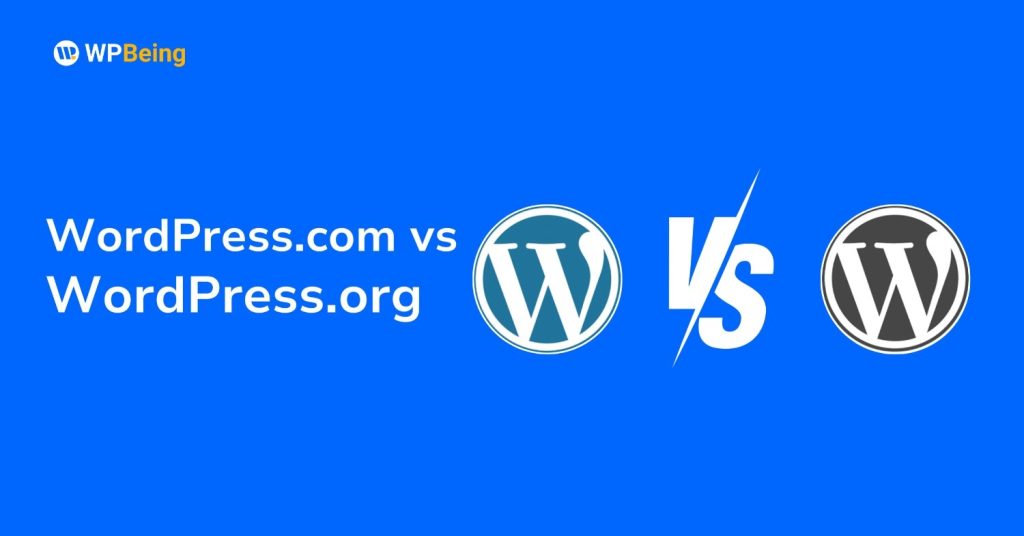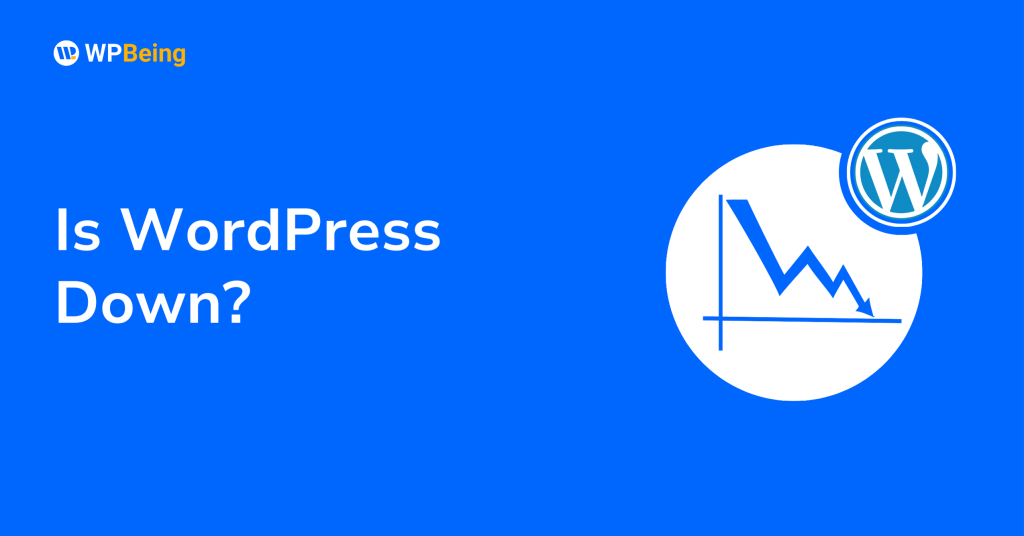As of March 2025, WordPress powers 44% of all websites worldwide. Holding a 61.6% share of the content management system (CMS) market, it stands far ahead of platforms like Shopify and Wix.
With over 30,000 themes and 70,000+ plugins, WordPress offers endless customization, making it the top choice for businesses, bloggers, and developers. Its continuous growth and adaptability keep it at the forefront of web development.
This article explores the latest WordPress statistics, including its market share, usage trends, security insights, and more.
WordPress Statistics: Key Highlights
- As of April 2025, 66.56 million websites have been built using WordPress.
- WordPress powers 44% of all websites that use a content management system (CMS).
- Holding a 61.6% market share, WordPress is the leading CMS worldwide.
- The platform offers over 70,000 plugins, providing extensive customization options.
- With more than 30,000 themes available, users can create unique and professional website designs.
How Many WordPress Websites Are There?
1. As of April 2025, there are 66.56 million websites that have used WordPress.
However, not all of them are active today. Currently, 30.46 million websites are live and running on WordPress, shaping the internet with blogs, business sites, e-commerce stores, and more.
In addition to these, there are 2.76 million domains that simply redirect to websites on this list, playing a supporting role in the vast WordPress ecosystem.
Beyond that, over 6 million websites have used WordPress in the past but are no longer active, showcasing the platform’s long-standing influence in the web development industry.
Source: Built With
What Percent Of Websites Use WordPress?
2. WordPress remains the most widely used content management system, with 44% of all websites using CMS technologies powered by WordPress.
The second-largest CMS, Wix, holds only 11% of the market, meaning WordPress is four times more popular than its closest rival. Similarly, Squarespace, with 6%, and GoDaddy Website Builder and Blogger, each at 4%, collectively account for only 14%, further emphasizing WordPress’s dominance.
Here are further details about the share of websites that use different CMS Platforms.

WordPress Marketshare
3. WordPress dominates the CMS market, holding a massive 61.6% share.
This makes it the most widely used content management system, far ahead of its competitors.
Its dominance highlights its flexibility, ease of use, and strong community support, making it the top choice for businesses, bloggers, and developers worldwide.
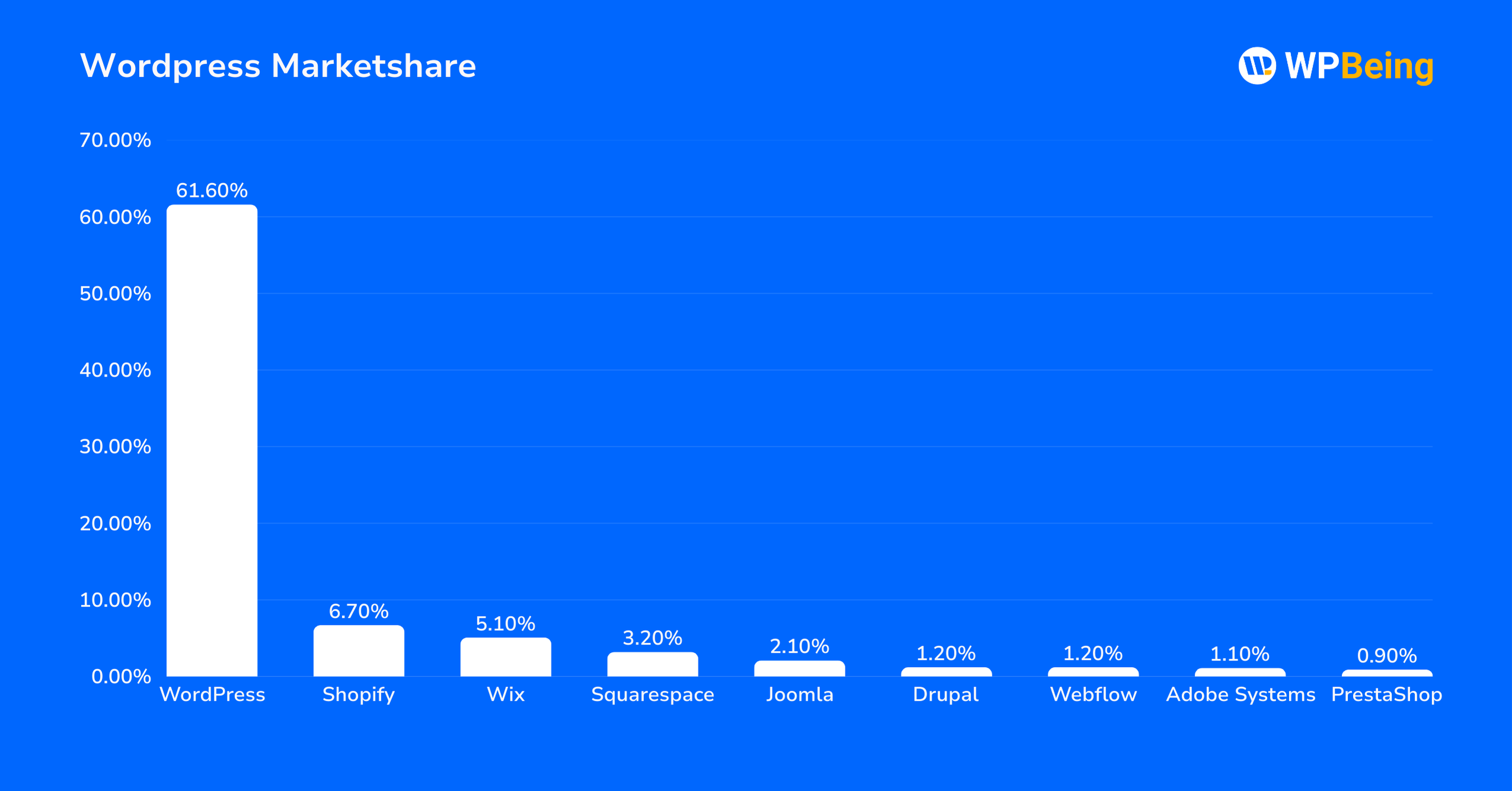
Shopify, the second-largest CMS, has only 6.7%, meaning WordPress is nearly 10 times more popular than its closest rival.
Other well-known platforms like Wix (5.1%), Squarespace (3.2%), and Joomla (2.1%) have much smaller market shares, reinforcing WordPress’s clear leadership.
Here is a further breakdown of the market share of the content management system by platform
How Many WordPress Themes Are There?
4. As of April 2025, the total number of WordPress themes available is well over 30,000, combining both free and premium options.
Here is a further breakdown of the number of themes available on WordPress:
- The WordPress.org theme directory alone offers nearly 13,000 free themes, catering to bloggers, businesses, and e-commerce stores alike.
- On the premium side, ThemeForest features around 12,000 paid themes, providing high-quality, professionally designed options.
- Beyond these major sources, numerous independent theme providers—such as WPZOOM and other boutique theme shops—add even more variety to the mix.
With new themes constantly being developed, pinpointing an exact number is challenging, but one thing is clear: WordPress users have an endless array of design possibilities at their fingertips.
Most Popular WordPress Themes
5. With a 13% market share, Hello Elementor is the most widely used WordPress theme, likely due to its seamless integration with the popular Elementor page builder.
Close behind, Astra powers 12% of sites, popular for its speed, flexibility, and ease of customization.
Divi holds 9% of the market, making it a top choice for users who love its built-in drag-and-drop builder and design options.
Despite being well-known for eCommerce, Flatsome is used by just 3% of sites, as many WooCommerce users prefer other themes.
Interestingly, 62% of websites rely on other themes, showing that many users opt for niche, custom, or lesser-known options.
Source: Built with
How Many WordPress Plugins Are There?
WordPress offers a massive selection of plugins, making it one of the most customizable CMS platforms available. Here’s a breakdown of what’s currently available:
6. 59,000+ free plugins in the official WordPress Plugin Directory
7. 5,200+ premium plugins on CodeCanyon
8. Thousands more from independent developers and third-party marketplaces
While the official count sits at over 64,000, the actual number is likely much higher. With new plugins constantly being developed and distributed outside these main sources, the total number of WordPress plugins easily surpasses 70,000.
Most Popular WordPress Plugins
9. Elementor, Contact Form 7, Yoast SEO, and Classic Editor stand out as the most widely used WordPress plugins, each boasting over 10 million active installations.
Their massive adoption reflects how essential drag-and-drop page building, form creation, SEO optimization, and a familiar editing experience are for WordPress users.
Meanwhile, WooCommerce, with 8+ million installations, dominates the e-commerce space, proving that WordPress is a go-to choice for building online stores. Its widespread use highlights the platform’s flexibility in supporting businesses of all sizes.
Additionally, the popularity of plugins like LiteSpeed Cache, Akismet, and Wordfence Security shows that WordPress users care about speed, spam protection, and site security.
Here is a list of top WordPress plugins by active installation:
| Plugin Name | Active Installations | Function |
|---|---|---|
| Elementor | 10+ million | Drag-and-drop page builder |
| Contact Form 7 | 10+ million | Simple and flexible form builder |
| Yoast SEO | 10+ million | SEO optimization |
| Classic Editor | 10+ million | Restores the old WordPress editor |
| WooCommerce | 8+ million | E-commerce solution |
| LiteSpeed Cache | 6+ million | Caching and performance booster |
| Akismet | 6+ million | Spam protection |
| WPForms | 6+ million | Beginner-friendly form builder |
| All-in-One WP Migration | 5+ million | Site migration and backup |
| Wordfence Security | 5+ million | Security and firewall protection |
WordPress Usage Statistics
10. As of April 2025, an overwhelming 87.4% of all WordPress websites run on Version 6, making it the dominant choice. This high adoption rate highlights how crucial regular updates are for security, performance, and new features.
A significantly smaller portion of websites still rely on older versions:
- Version 5 is used by 9% of websites, indicating that some users have yet to transition.
- Version 4 accounts for 3.3%, showing a shrinking number of sites holding onto older frameworks.
- Version 3 is barely in use, with just 0.3% of websites still running on it.
Source: W3Tech
WordPress Statistics By Country
11. The United States has 3.32 million WordPress websites, making it the clear leader in WordPress adoption.
In Europe, Germany (1.46 million), the UK (1.08 million), and France (847,000+) also have a strong presence, reflecting the platform’s widespread popularity.
While these developed nations dominate in numbers, India (600,000+) and Brazil (858,000+) are quickly expanding their WordPress footprint, highlighting a growing shift toward digital platforms in emerging markets.
Here’s a breakdown of the top countries using WordPress:
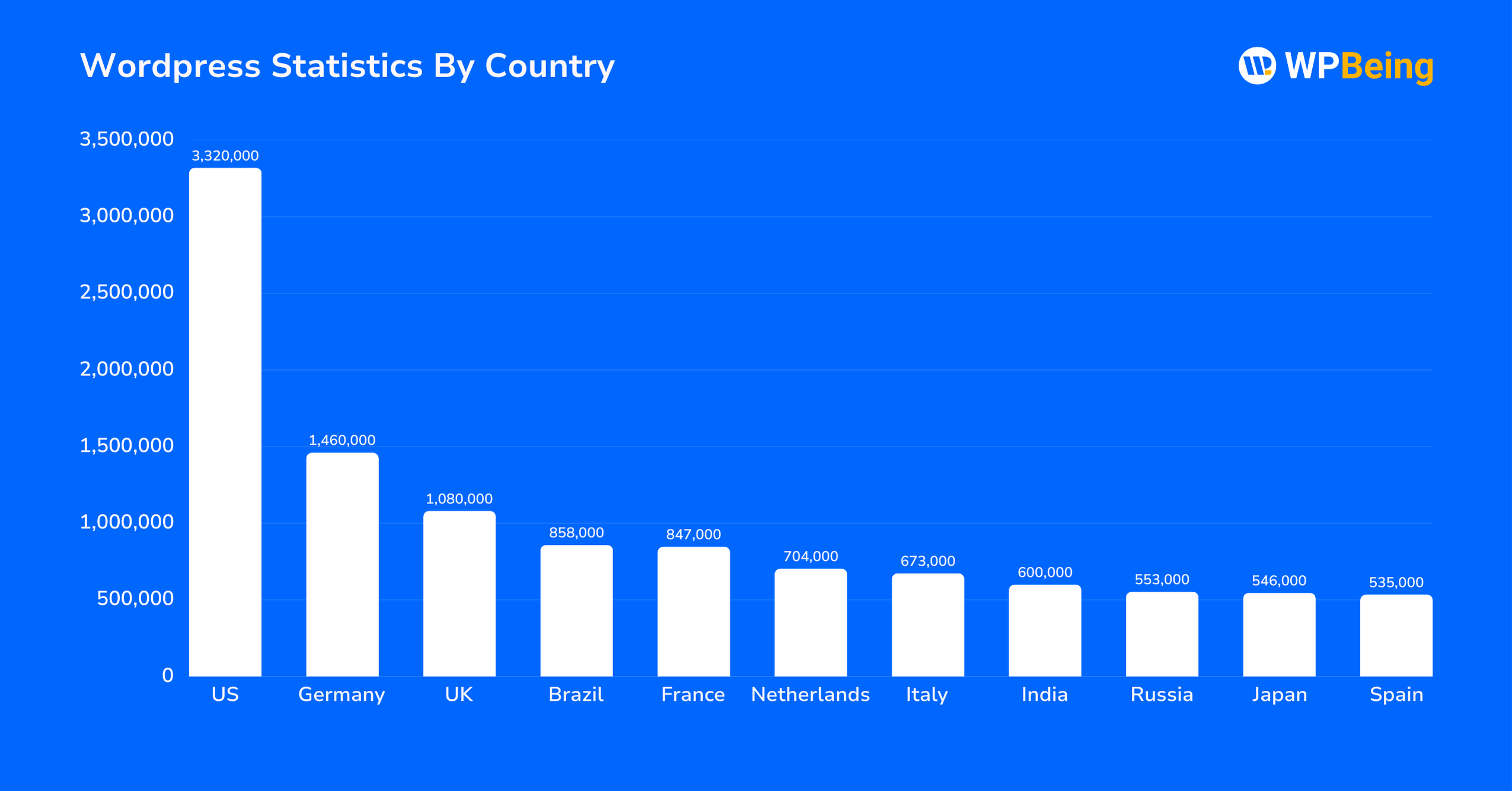
WordPress Seo Statistics
12. Nearly a third of the world’s most-visited websites rely on WordPress.
Out of the top 1 million high-traffic sites, an impressive 29.13% use WordPress’s open-source software. This highlights its widespread adoption among major websites, proving its reliability, flexibility, and scalability for handling large audiences.
Source: AIOSEO
13. Yoast SEO is one of the most widely utilized WordPress plugins, boasting over 5 million active installations.
It is a preferred choice among website owners and digital marketers, offering a streamlined approach to search engine optimization.
With nearly 25,000 user reviews and an impressive 4.8-star rating, Yoast SEO has established itself as a reliable tool for improving on-page SEO.
Its features include meta description optimization, XML sitemap generation, and content analysis, all designed to enhance search engine visibility and website performance.
Here is a list of the top SEO plugins by their active installations:
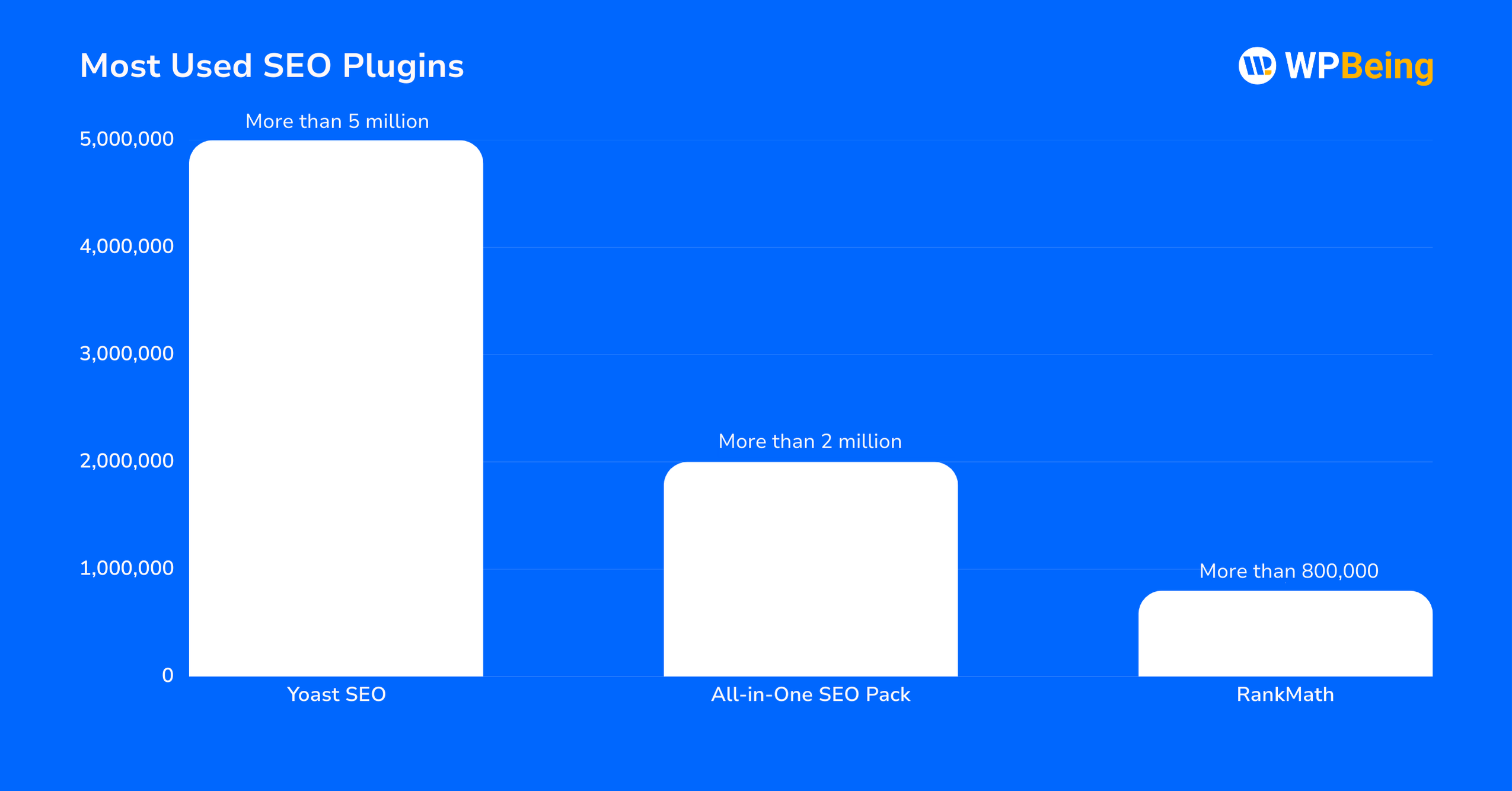
| Plugin | Active Installations |
|---|---|
| Yoast SEO | More than 5 million |
| All-in-One SEO Pack | More than 2 million |
| RankMath | More than 800,000 |
14. Every month, WordPress attracts a staggering 3.2 million search queries, reflecting its immense popularity and widespread use.
From beginners looking for setup guides to experienced developers searching for advanced customizations, millions turn to search engines for WordPress-related information. This high search volume highlights the platform’s dominance in the website-building space and its continuous demand among users worldwide.
Source: Active Campaign
15. Every month, the term “WordPress” is searched approximately 2.74 million times globally.
This high search volume reflects the widespread interest in WordPress, from new users exploring website creation to developers seeking advanced customization options.
With over 43% of all websites running on WordPress, it’s no surprise that millions turn to search engines for tutorials, troubleshooting guides, and plugin recommendations.
The consistent demand for WordPress-related information showcases its dominance as the leading content management system (CMS) and a go-to platform for businesses, bloggers, and developers alike.
Source: KWFinder
WordPress Security Statistics
16. Nearly half of all WordPress websites may be at risk due to outdated or vulnerable software.
On average, 42% of WordPress sites have at least one plugin, theme, or core file with known security flaws. This highlights the importance of regular updates, security monitoring, and proactive maintenance to keep websites protected from potential threats.
Source: Patchstack
17. WordPress security risks are largely tied to plugins, with 97% of new vulnerabilities originating from them.
Among these threats, Cross-Site Scripting (XSS) is the most common, making up 53.3% of all new security flaws. This type of attack allows hackers to inject harmful scripts into websites, potentially stealing sensitive data or redirecting visitors to malicious pages.
Other significant vulnerabilities include Cross-Site Request Forgery (CSRF) at 16.9% and Broken Access Control at 12.9%, both of which can be exploited to manipulate user actions or bypass security restrictions.
The prevalence of XSS attacks has surged compared to previous years. In 2022, XSS accounted for only 27% of vulnerabilities, ranking below CSRF at 29%. This increase highlights the growing need for regular security updates and stronger protection measures in the WordPress ecosystem.
Source: Patchstack
18. In the first half of 2023, Wordfence’s Web Application Firewall (WAF) blocked 3 million attacks.
These attacks originated from approximately 14,000 different IP addresses, highlighting the scale of malicious activity targeting WordPress-powered websites.
This massive wave of cyber threats targeted vulnerabilities in WordPress websites, aiming to exploit security loopholes for unauthorized access, data breaches, and site disruptions.
Source: AIOSEO
19. Around 90% of WordPress security vulnerabilities come from third-party plugins, making them the biggest target for hackers.
Meanwhile, 6% of vulnerabilities are linked to themes, and only 4% affect WordPress’s core software.
With millions of websites relying on WordPress, cybercriminals frequently exploit outdated or poorly coded plugins to gain unauthorized access. This highlights the importance of regularly updating plugins, choosing reputable developers, and using security tools to protect websites from potential threats.
Source: AIOSEO
20. SEO spam is the most common malware attack, making up 55.4% of cases.
Hackers insert unwanted links and keywords into websites, harming search rankings and credibility.
Injected malware follows closely, accounting for 34.14% of attacks. This type of malware hides harmful code in websites, potentially stealing data or redirecting visitors. Regular security checks and updates can help protect against these threats.
Here is a breakdown that highlights how SEO spam and injected malware are the most common threats, while other attack types occur less frequently but still pose risks:
| Malware Attack Type | Percentage (%) |
|---|---|
| SEO Spam | 55.40% |
| Injected Malware | 34.14% |
| Unwanted Ads | 1.47% |
| Defacements | 1.16% |
| CC Stealers | 0.80% |
Source: AIOSEO
How Much Do People Make With WordPress?
21. WordPress development is a well-paying career in the U.S., with an average salary of $84,542 per year—which translates to about $7,045 per month or $41 per hour.
Top developers can make as much as $148,000 annually ($71 per hour), nearly 75% more than the average. On the other end, the lowest 25% earn around $60,500 per year ($29 per hour), meaning top earners make more than twice as much as those at the lower end.
Most WordPress developers fall within the $60,500 to $99,500 range, making it a stable and scalable career choice, whether in full-time positions or freelancing. With experience, specialization, and the right skills, earnings can grow significantly, making WordPress development a financially rewarding field.

The following table displays the salary breakdown of WordPress developers’ salaries in the U.S., highlighting key earnings across different experience levels:
| Earners By Experience | Annual Salary | Monthly Pay | Weekly Pay | Hourly Wage |
|---|---|---|---|---|
| Top Earners | $148,000 | $12,333 | $2,846 | $71 |
| 75th Percentile | $99,500 | $8,291 | $1,913 | $48 |
| Average | $84,542 | $7,045 | $1,625 | $41 |
| 25th Percentile | $60,500 | $5,041 | $1,163 | $29 |
More Stats Like This:
Conclusion: 66.52 Million Websites Powered by WordPress
WordPress continues to dominate the web, powering over 66.52 million websites and holding a 61.6% market share in the CMS industry as of March 2025. Its massive ecosystem, with 70,000+ plugins and 30,000+ themes, makes it a go-to platform for businesses, bloggers, and developers.
While WordPress offers flexibility and endless customization, security is still a challenge, with 90% of vulnerabilities linked to third-party plugins. Staying updated with best practices is key to keeping sites safe and running smoothly.
With constant updates and a strong community, WordPress continues to evolve, shaping the future of website creation for years to come.

